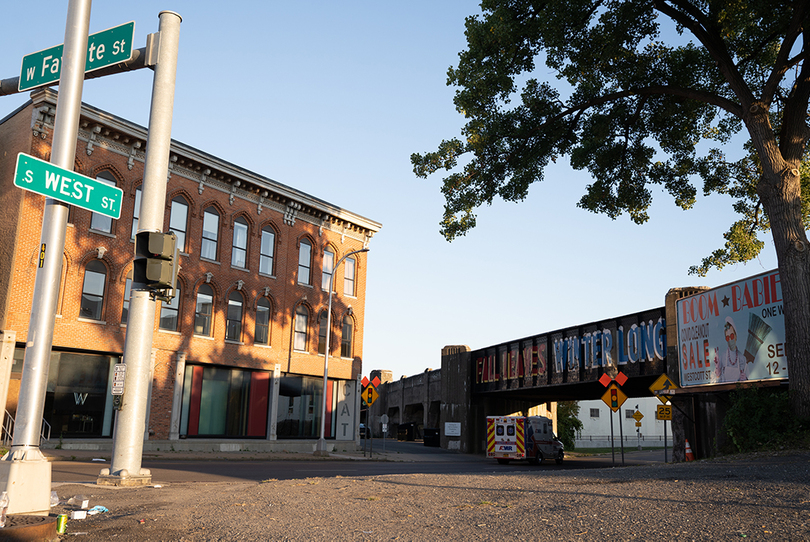Syracuse to expand public Wi-Fi access for city residents

The new access points are part of Mayor Walsh’s “Syracuse Surge” initiative to improve the city’s economy with technological advancements. Emily Steinberger | Photo Editor
Get the latest Syracuse news delivered right to your inbox.
Subscribe to our newsletter here.
The city of Syracuse will install Wi-Fi access points at six community centers over the next few weeks.
Installing the access points is an effort to bridge the city’s “digital divide” — a disparity in the number of people who own computers or smartphones and can easily access the internet. But a lack of internet connection is only one part of the problem, residents and city officials said.
The move is part of Mayor Ben Walsh’s “Syracuse Surge” initiative, which seeks to bolster the city’s economy through technological advancements. In recent months, the initiative has tackled large-scale projects such as partnering with Verizon to begin work on establishing a citywide 5G network and replacing street lights throughout Syracuse with new LED fixtures.
“(The internet) has become a major resource — almost as important as having nourishing food and having a shelter over your head,” said Jen Tifft, the deputy commissioner of the city’s Department of Neighborhood and Business Development. “In times like this, during a pandemic, access to connected technology, access to the internet, those things become critical for basic day-to-day activities like going to school or, potentially, doing your job.”
The access points will include five city-owned centers, along with the Spanish Action League, a community center supporting Syracuse’s Latino population, she said.
Many of these centers already provide internet access to those inside of the buildings, but the outdoor access points will supply an internet connection to anyone within a 150-foot radius around the building, Tifft said.
Syracuse has struggled with its digital divide for several years. Almost one-third of Syracuse households lack access to broadband internet, according to U.S. Census data between 2015 and 2019. Almost 20% of Syracuse households don’t own a computer.
In 2019, Syracuse ranked #46 on the National Digital Inclusion Alliance’s list of “Worst Connected Cities,” which is based on the percent of households that possess any type of broadband internet subscription, including mobile data plans.
Limited access to affordable broadband internet, computers or smartphones and poor digital literacy all contribute to this digital divide, said Annabeth Hayes, the co-chair of the CNY Digital Inclusion Coalition.
Since the coalition’s founding a few years ago, Hayes and co-chair Scott Kushner have partnered with organizations throughout the region to develop solutions to the digital divide stretching across central New York.
Over the past several months, the organization has worked to create a “digital navigator” program that will help people obtain internet access, acquire internet-connected devices and gain digital literacy.
The organization also collaborated with the National Digital Inclusion Alliance to construct a map displaying the percent of homes with internet access in the Syracuse metropolitan area. It found that the number of internet-connected households varies significantly throughout the city’s different neighborhoods.
In areas of the city with higher poverty rates, such as the Washington Square neighborhood, the percentage of households with internet access plunges to as low as 20%.
“We’re specifically dealing with the digital divide, but this speaks to a broader issue in our society, which is equity,” Kushner said. “If you’re living in a richer area, chances are you’re going to have better access to internet, and you can ‘pay to play.’ And it puts a lot of people at a disadvantage.”
Hayes and Kushner view the city’s installation of Wi-Fi access points as a good starting point in narrowing the digital divide. But for city residents without smartphones or laptops, or those who lack access to transportation to the community centers, these access points likely won’t be beneficial, they said.
The city plans to collect data about the use of the initial six internet access points to determine which neighborhoods may require additional access points, Tifft said. But these points are only the first step in expanding internet access in Syracuse, and the city plans to continue to address the issue, she said.
“It really is not OK that so many people who live in our city don’t have reliable internet access or (internet-connected) devices,” she said. “We need to devise a number of solutions to address the problem, because it’s not just access to the internet that’s a problem.”





